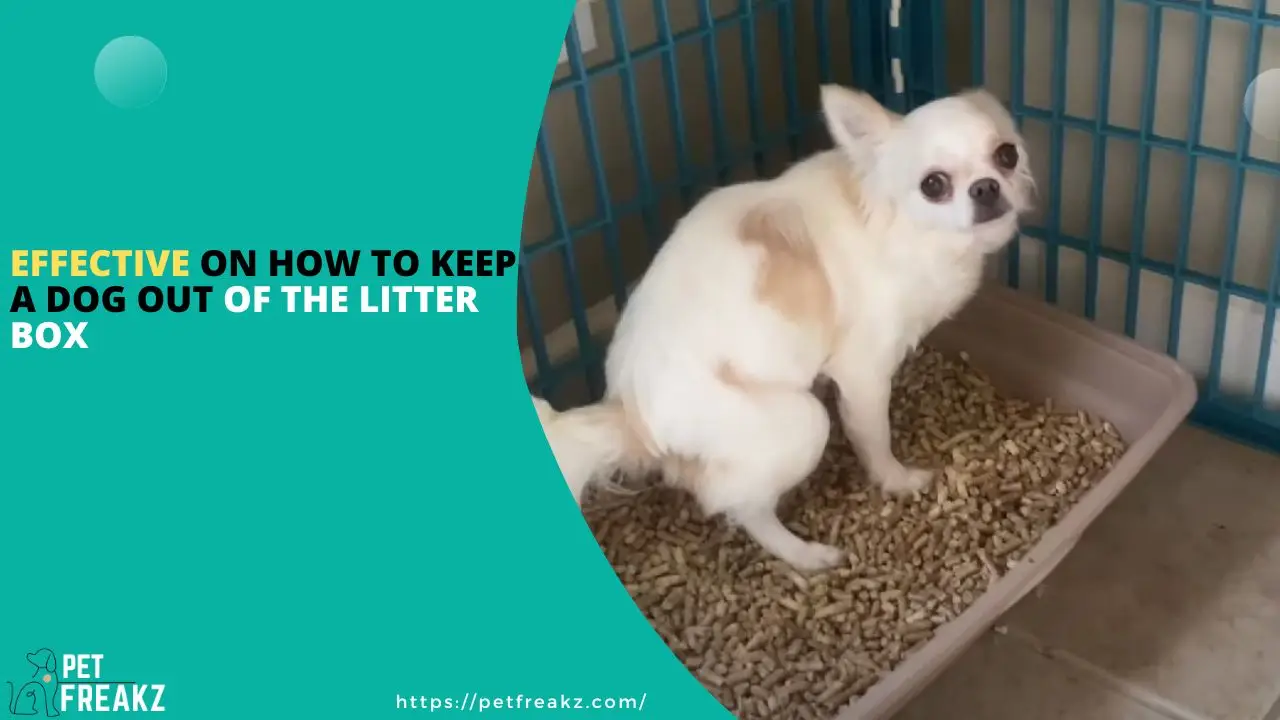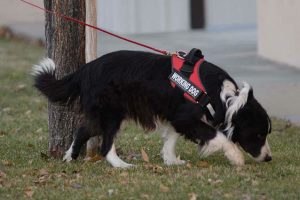Table of Contents
Understanding the Behaviour of Dogs and Their Attraction to the Litter Box
As dog owners, it is important for us to understand the behaviour of our furry friends, especially when it comes to their attraction to the litter box. Dogs are naturally curious creatures, and the smell and contents of the litter box can be incredibly intriguing to them. They are often drawn to the litter box due to the scent of the cat’s waste, which they perceive as a potential source of food or an interesting object to investigate.
The Potential Dangers of Dogs Accessing the Litter Box
While it may seem harmless for dogs to explore the litter box, there are actually several potential dangers associated with this behaviour. Firstly, the litter itself can be harmful if ingested in large quantities, leading to gastrointestinal blockages or other digestive issues. Additionally, dogs may come into contact with parasites or bacteria present in the litter, which can pose health risks not only to them but also to other members of the household.
How to Keep a Dog Out of the Litter Box
One of the most common questions is “How do I keep my dog out of my cat’s litter box?”. Every pet owners face this kind of issue. So, In this section, we will guide you on how to keep a dog out of the litter box.
Creating a Physical Barrier to Prevent Dog Access to the Litter Box
One of the most effective strategies to keep your dog out of the litter box is to create a physical barrier. This can be achieved by placing the litter box in an elevated location that is inaccessible to your dog, such as on a high shelf or inside a cabinet with a cat-sized entrance. Alternatively, you can use baby gates or pet-specific barriers to restrict your dog’s access to the area where the litter box is placed. By physically separating the dog from the litter box, you can significantly reduce the chances of your dog getting into it.
Training Your Dog to Stay Away From the Litter Box

Training your dog to stay away from the litter box requires consistency and positive reinforcement. Start by teaching your dog the “Leave it” or “Off” command, and use it whenever they approach the litter box. Reward them with treats and praise when they respond appropriately and move away from the area. It is important to be patient and persistent with the training process, as it may take some time for your dog to fully grasp the concept. With consistent training, your dog will learn to associate the litter box with a negative response and will be more likely to stay away from it.
Providing Alternative Distractions and Outlets for Your Dog’s Energy
Another effective strategy is to provide alternative distractions and outlets for your dog’s energy. Dogs are more likely to be attracted to the litter box when they are bored or seeking stimulation. Engage your dog in regular exercise and play sessions to tire them out and keep them mentally stimulated. Provide them with interactive toys, puzzle feeders, or chew toys to keep them occupied and redirect their attention away from the litter box.
By providing alternative outlets for their energy, you can help reduce their inclination to explore the litter box.
Utilizing Deterrents and Repellents to Discourage Your Dog From Approaching the Litter Box
There are various deterrents and repellents available in the market that can be used to discourage your dog from approaching the litter box. These products often utilize scents or tastes that are unpleasant to dogs, such as citrus or bitter apple. Apply these deterrents around the perimeter of the litter box or on surfaces that your dog may try to access. It is important to choose products that are safe for both cats and dogs, as the litter box should still remain an inviting and comfortable space for your feline companion.
Managing the Litter Box Environment to Make it Less Appealing to Your Dog
In addition to using deterrents, you can also manage the litter box environment to make it less appealing to your dog. Consider using covered litter boxes that have a small entrance that is difficult for dogs to access. This will create an obstacle for your dog and make it less enticing for them to approach the litter box. You can also try using litter box toppers or mats that have uncomfortable textures for dogs to walk on. By making the litter box environment less appealing, you can keep a dog out of the litter box easily.
Addressing Underlying Issues
Sometimes, a dog’s obsession with the litter box may stem from underlying issues that need to be addressed. For example, they may be experiencing anxiety, boredom, or a lack of mental stimulation.
Evaluate your dog’s overall well-being and make sure their basic needs are being met. Allow them to get plenty of exercise, mental stimulation, and social engagement.
Additionally, consult with a veterinarian to rule out any potential medical conditions that may be contributing to their behaviour. By addressing these underlying issues, you can help alleviate your dog’s obsession with the litter box.
Seeking Professional Help and Guidance for Persistent Issues
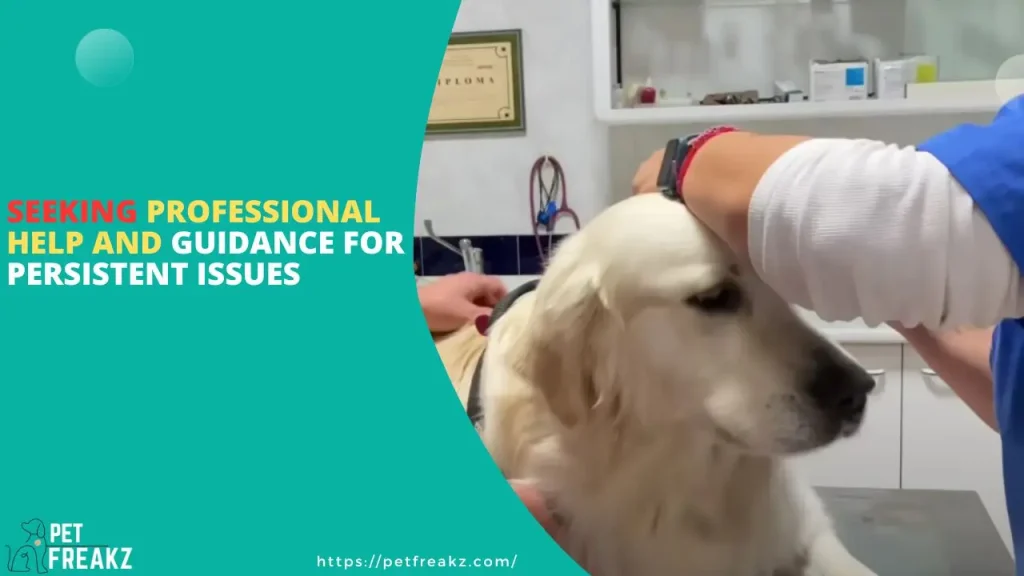
If despite your best efforts, your dog continues to be obsessed with the litter box, it may be time to seek professional help and guidance. A professional dog trainer can provide valuable insights to address your specific situation.
They can assess your dog’s behaviour, identify any underlying issues, and recommend appropriate training techniques or behaviour modification plans. Remember that every dog is different, and what works for one might not work for another.
Seeking professional help can ensure that you receive expert advice and support to effectively manage your dog to keep out of the litter box.
Why Do Dogs Eat Cat Poop?
Dogs indulging in cat poop might leave you puzzled, but there are several reasons behind this behaviour.
1. Instinctual Behavior:
Dogs are scavengers by nature, and their ancestors used to scrounge for food to survive. Eating feces, including cat poop, could be a remnant of this survival instinct.
2. Nutritional Deficiency:
A diet lacking essential nutrients may prompt dogs to seek alternative sources, leading them to consume cat poop.
3. Attracting Attention:
Sometimes, dogs eat cat poop to gain attention from their owners, even if it’s negative attention. They may interpret scolding as an interaction and repeat the behaviour.
4. Curiosity:
Dogs are curious creatures, and they explore the world through their senses, including taste. Cat poop might simply be intriguing to them.
5. Stress and Anxiety:
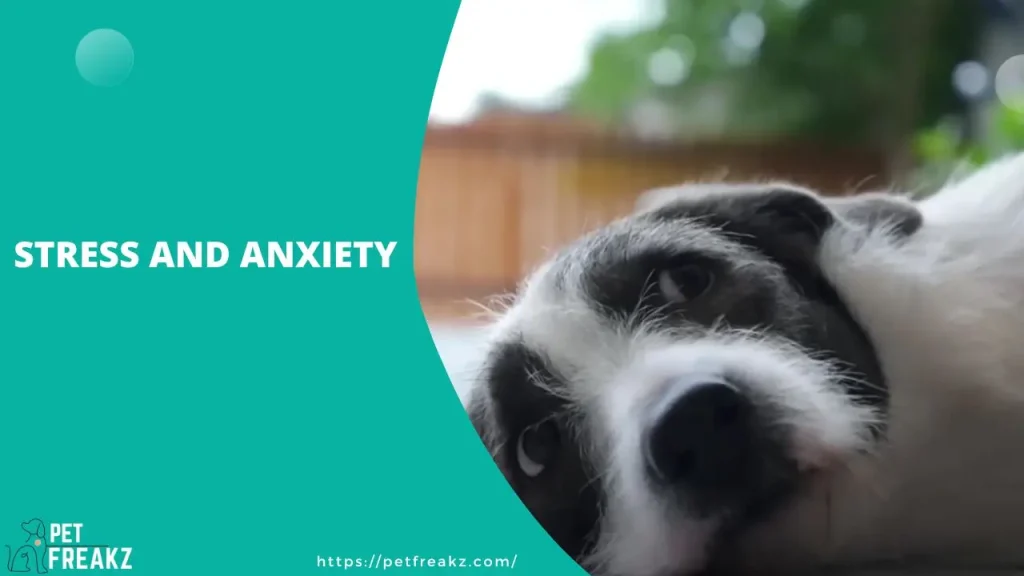
Stress or anxiety can trigger coprophagia in dogs. Major life changes, boredom, or separation anxiety may drive them to engage in this behaviour.
Health Risks Associated with Dogs Eating Cat Poop:
While coprophagia might not be immediately harmful, it can pose certain health risks to your furry friend.
Parasite Transmission:
Cat feces may contain parasites such as Toxoplasma gondii, which can be transmitted to dogs and cause various health issues.
Gastrointestinal Disturbances:
Consuming cat poop can upset a dog’s stomach, leading to vomiting, diarrhea, and discomfort.
How to Stop Dogs from Eating Cat Poop?
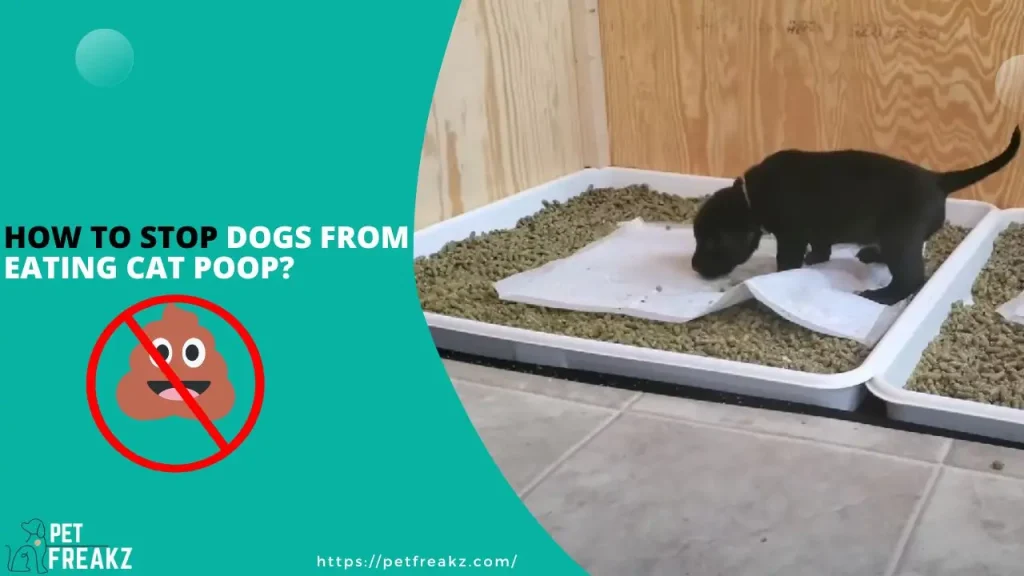
Now that we understand the reasons and potential risks, let’s explore effective strategies to prevent dogs from eating cat feces.
Keep the Litter Box Out of Reach:
If you have a cat at home, ensure the litter box is placed in an area inaccessible to your dog. Consider using baby gates or elevated spaces.
Train the “Leave It” Command:
Teaching your dog the “Leave It” command can be beneficial in redirecting their attention away from the cat poop.
Supervise Outdoor Time:
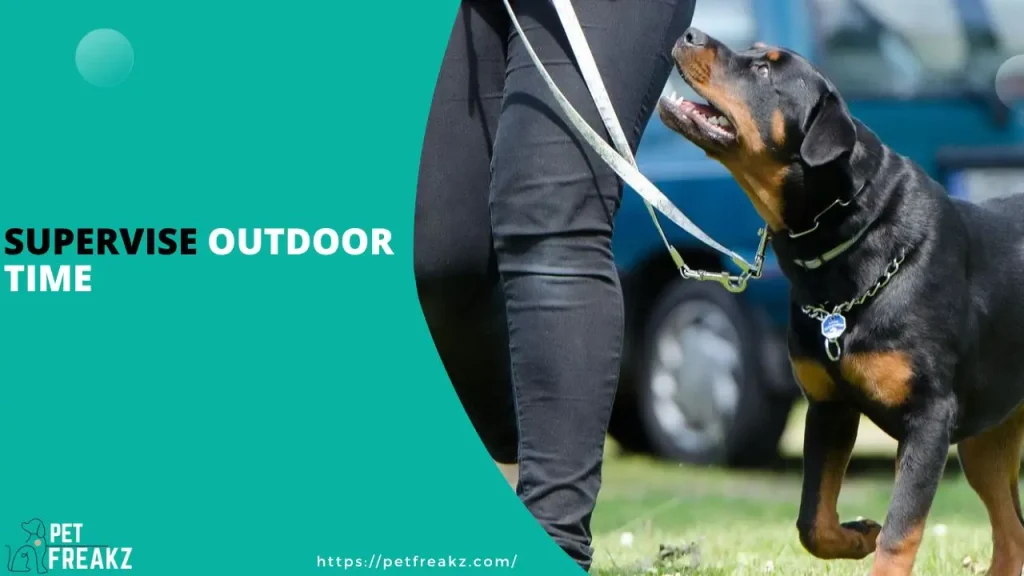
Supervise your dog during walks or playtime in areas where they might encounter cat feces.
Improve Their Diet:
Ensure your dog receives a nutritionally balanced diet to reduce the likelihood of seeking extra nutrients from cat poop.
Provide Mental and Physical Stimulation:
A bored dog is more likely to engage in undesirable behaviours. Engage them in regular exercise and provide mental stimulation through toys and puzzles.
Address Stress and Anxiety:
If your dog’s coprophagia is stress-induced, consult a professional trainer or veterinarian to address the underlying issues.
Use Deterrents:
Consider using taste deterrents or sprays around the litter box or areas with cat feces to discourage your dog from approaching them.
Clean the Yard Regularly:
Keep your yard clean by promptly disposing of cat feces. A clean environment reduces the temptation for your dog to indulge.
How to Separate Dog and Cat Food
Separating dog and cat food can be a straightforward process if you follow the right steps. Here, we’ll outline a step-by-step guide to ensure your pets get the right food every time.
- Understand Nutritional Needs: Dogs and cats have unique dietary needs. Dogs are omnivores, requiring a balanced diet of protein, carbohydrates, and fats. On the other hand, cats are obligate carnivores, meaning their diet must primarily consist of animal-based proteins.
- Organize Feeding Stations: Designate separate feeding areas for your pets. This prevents them from eating each other’s food and minimizes the chances of disagreements during mealtime.
- Use Different Bowls: Invest in distinctive bowls for your dogs and cats. This visual cue will help you and your pets remember which bowl belongs to whom.
- Set Feeding Schedules: Establish regular feeding schedules for both your dog and cat. Dogs usually require two meals a day, while cats may prefer smaller, more frequent meals.
- Monitor Eating Habits: Keep an eye on your pets during mealtime to ensure they are eating their own food. Correct any undesirable behaviour gently and encourage them to eat from their designated bowls.
- Control Access to Food: If your dog has a habit of finishing your cat’s food, consider using baby gates or pet doors to create designated areas for each pet during meals.
- Store Food Separately: Keep the dog and cat food bags in separate, clearly labelled containers to avoid any mix-ups.
- Provide Fresh Water: Always provide fresh water for both your pets. Water is important for their general health and digestion.
FAQs
Can I use a baby gate to keep my dog away from the litter box?
Yes, a baby gate can be an effective barrier to keep your dog out of the litter box area.
Is it safe for my cat to use a covered litter box?
Yes, as long as the covered litter box is well-ventilated and cleaned regularly, it is safe for your cat to use.
How do I stop my dog from eating cat feces from the litter box?
You can try elevating the litter box, using a covered box, or teaching your dog the “leave it” command.
What type of litter is least appealing to dogs?
Clay-based or scented litters are often less appealing to dogs.
My dog seems stressed; could this be why they’re interested in the litter box?
Yes, stress or anxiety can be one of the reasons why your dog is drawn to the litter box. Addressing the underlying stress is essential.
Is it okay for my dog to eat cat food occasionally?
Occasional consumption of cat food won’t harm your dog, but it should not become a regular part of their diet. Cat food is lacking in essential nutrients that dogs require.
Why does my dog prefer cat food over its own food?
Dogs may find cat food more appealing due to its higher fat and protein content. However, long-term consumption of cat food can lead to nutritional imbalances in dogs.
How can I prevent my dog from eating my cat’s food?
You can prevent this behaviour by using separate feeding stations and bowls for your dog and cat, establishing consistent feeding schedules, and providing supervision during mealtimes.
Conclusion
In conclusion, keeping your dog away from the litter box requires a combination of understanding their behaviour, implementing physical barriers, training them to stay away, providing alternative distractions and seeking professional help if needed.
By following these effective strategies, you can keep a dog out of the litter box. Remember, patience and consistency are key when it comes to modifying your dog’s behaviour.
With time and effort, you can successfully keep your dog out of the litter box and ensure the safety and well-being of all your furry companions.
